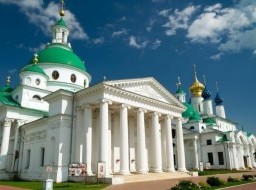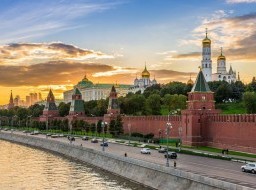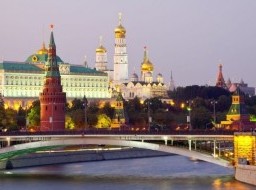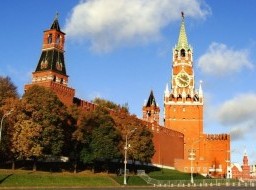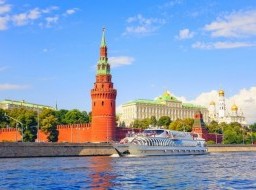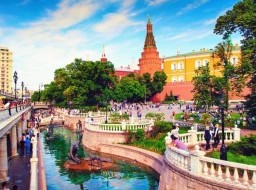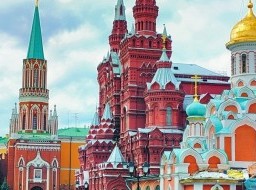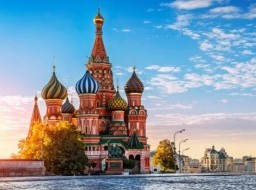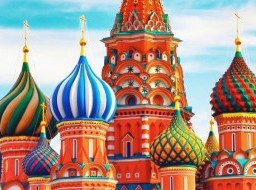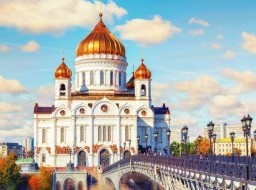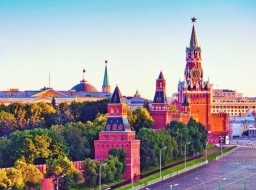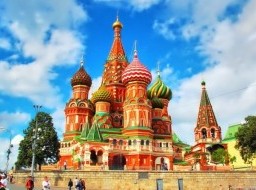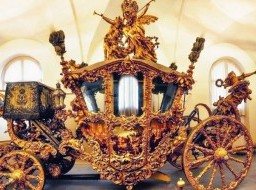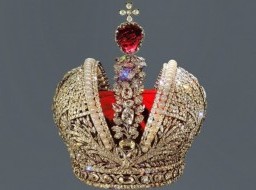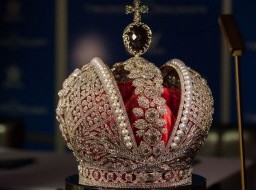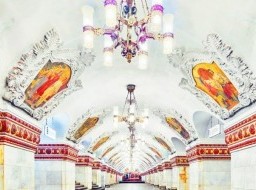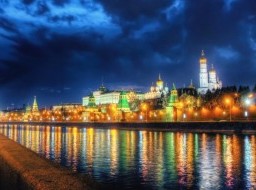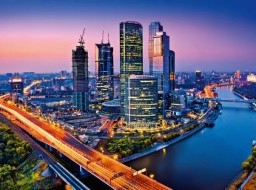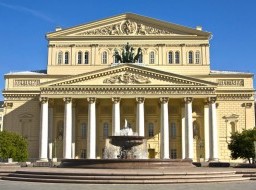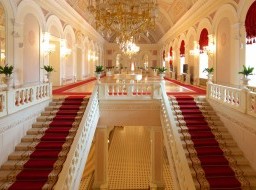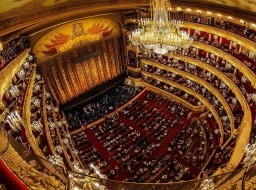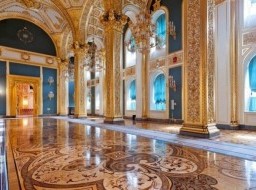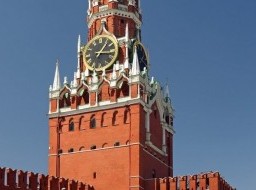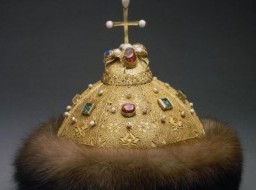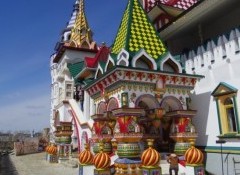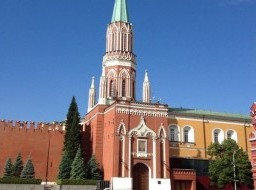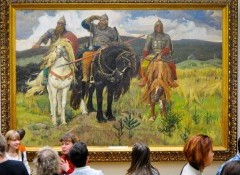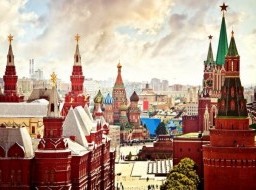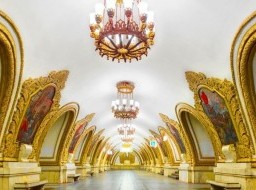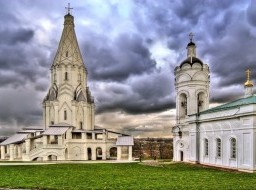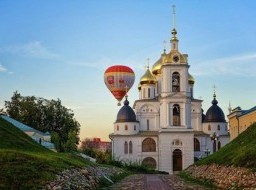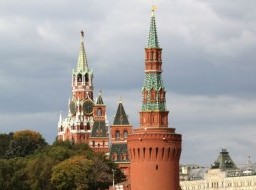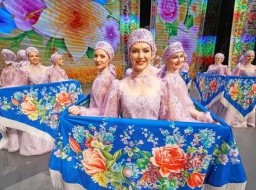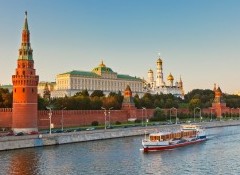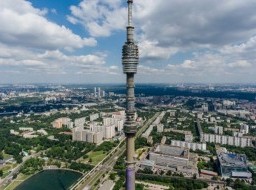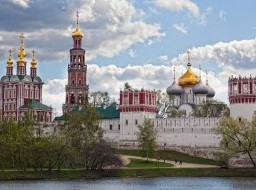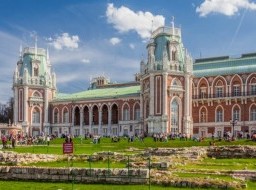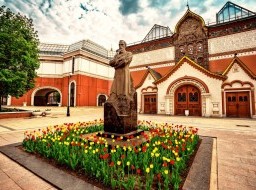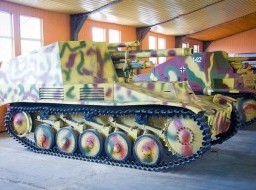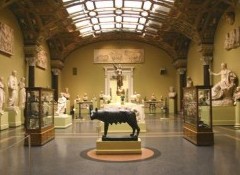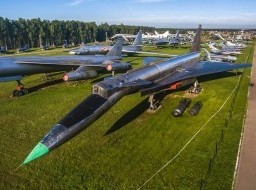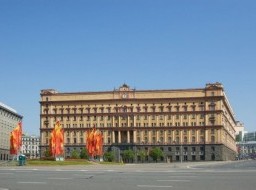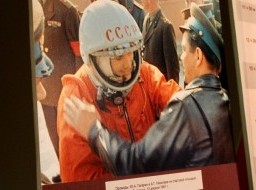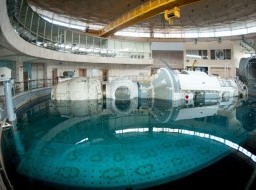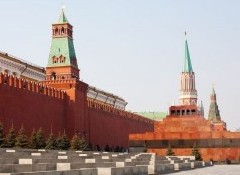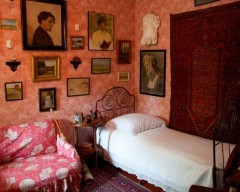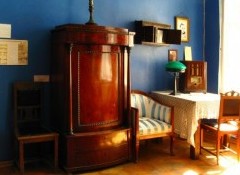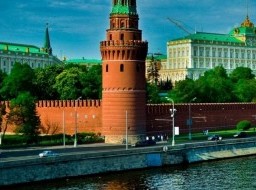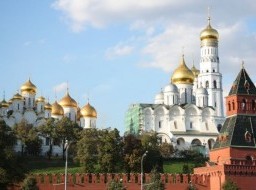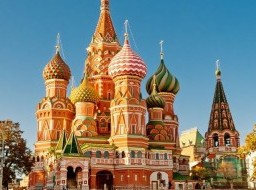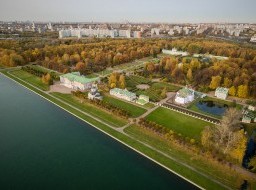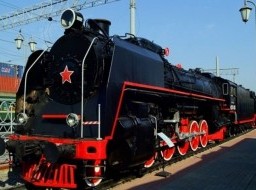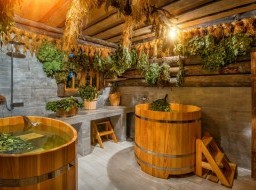Grand Kremlin Palace (The Kremlin)
The halls of the Grand Kremlin Palace are a real pleasure and a magnificent spectacle. The most beautiful state rooms are opened for the Tourists — St. George, St. Andrew, Vladimir, Alexander and Catherine rooms. All rooms are devoted to Russian orders. In these halls the most deserving citizens of Russia reward with medals and titles. The ambassadors and kings from all over the world come there. The halls of the Grand Kremlin Palace is the pride and grandeur of the Moscow Kremlin Museums. It is one of the world's best known cultural landmarks. This famous Kremlin building is constructed between 1838 and 1849 on Borovitsky Hill. The ensemble of the Moscow Kremlin has been included in the UNESCO World Heritage List. Since time immemorial it has been the centre of Russian statehood, the residence of Russian tsars and hierarchs of the Russian Orthodox Church. The Grand Kremlin Palace is a masterpiece of Russian architecture of its time. It was built in the southwest part of the Kremlin, on Borovitsky Hill, on the site of the earlier residence of grand princes and tsars. In the middle Ages in Russia a “Palace”, formerly “Terem”, meant a complex of buildings with gala (reception) halls, living rooms, court churches, workshops and household premises. The prince’s Terems in the Kremlin were first noted in the mid-14th century and were associated with Prince Ivan Kalita. The inexorable time and numerous fires did not spare the Kremlin’s old buildings. By the end of the 18th century many of them had fallen into decay. The construction of a new palace which would meet the requirements of the royal court began in 1838 and lasted eleven years. The palace faces the Moscow River. A group of architects headed by Professor K.A. Thon (1794-1881) from St. Petersburg who was known for his ability to build quickly and well, was entrusted with the task of designing and constructing the building. The outstanding Moscow architects F.F.Richter, N.I.Chichagov, P.A.Gerasimov and others took part. Their talent and professionalism enabled them to cope with the complicated task of uniting several buildings belonging to different styles and different times (14-17cc.) less than one roof. Yet the interior is modern as regards its design and constructional concept. The exterior of the palace is designed according to a model typical of past centuries; the traditional approach is clearly expressed in the application of decorative techniques. The palace has carved white-stone pediments and double-arched plat bands on the window-openings with pendants suspended in the center (as in the 17th-century Terems). The main and the eastern faces of the building have terraces, which are reminiscent of an old-Russian gulbische (a gallery built on the basement around a house). The main entrance and the arch recesses of the south side of the building match well. The palace has a figured roof and a tetrahedral attic with a cupola on top. The Grand Kremlin Palace is a unique example of Russian architecture of the mid-19th century. Elements of various styles, from baroque to classicism, were incorporated in the palace’s interiors, which are still almost intact today. Its decor is distinctly luxurious and perfectly executed. Thon's palace is 125 metres long, 47 metres high, and has a total area of about 25,000 square metres. It includes the earlier Terem Palace, nine churches from the 14th, 16th, and 17th centuries, the Holy Vestibule, and over 700 rooms. The buildings of the Palace form a rectangle with an inner courtyard. The building appears to be three stories, but is actually two. The upper floor has two sets of windows. The west building of the Palace held state reception halls and the imperial family's private chambers (picture). The Grand Kremlin Palace consists of several different rooms. The Red Staircase or Parade Staircase is the gateway to some of the most important receptions rooms in the Palace. Fifty-eight steps of history rebuilt here. The original ceremonial red staircase into the Palace of Facets, long since destroyed. It was on that Red Staircase, 400 years ago, that Ivan the Terrible killed the messenger, who brought him bad news; but more than 300 years ago, during a failed Palace coup, a young Peter the Great saw his friends thrown on bayonets; that Napoleon Bonaparte , almost 200 years ago, walked into Palace after occupying the Kremlin. And on this Red Staircase that recent history has been made. St. George's Hall The Red Staircase opens up to the largest room in the Grand Kremlin Palace, St. George Hall, named for highest military decoration awarded by the Czar. Elaborately decorated columns and marble slabs, bearing the knights of the order, line the wall of this more than 65 yard hall. It takes 3,000 light bulbs on six bronze chandeliers to light the room, which is still used today for official state functions. St. Vladimir Hall joins the newer areas of the Grand Kremlin Palace to the older buildings. Here a two ton chandelier is suspended in a 54-foot tall cupola, which is covered with elaborately leaf and scrollwork and studded with medallions of the Order of St. Vladimir. Not to be outdone by the ceiling, the floor is a mosaic of nut tree woods and stained oak. In the days of the Czars, St. Vladimir Hall was a place to greet middle level dignitaries. Today it is used for more formal occasions, like the signing of a treaty. The Grand Kremlin Palace is a unique monument of history and culture. It reveals fully the artistic manner and national peculiarities of Russian craftsmen of various epochs. |
|
